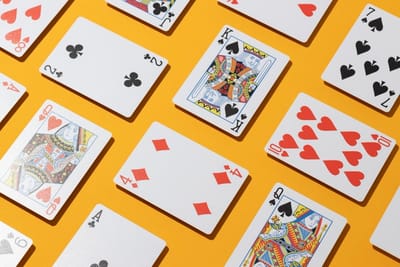Tennis courts, whether used for professional tournaments or weekend matches, require regular maintenance to remain in optimal condition. Proper care ensures a smooth gameplay experience and extends the lifespan of the court.

These surfaces can fall victim to various issues affecting their functionality and aesthetics without adequate attention.
One of the major concerns associated with neglecting maintenance is the eventual cost to resurface tennis court. With consistent care and understanding of potential problems, you can minimize this expense and keep the court in top-notch condition.
In this article, we’ll delve into some of the most common tennis court surface issues and how to prevent them.
Cracking And Fissures
One of the common tennis court surface problems is cracking. It’s a frequent issue that arises from various causes, including ground movement, temperature fluctuations, and poor construction.
For these reasons, regularly inspect the court for signs of cracks and address them early. For instance, you can use quality materials during the initial construction and employ experienced contractors to reduce the chances of cracks forming significantly.
Furthermore, apply sealant and specialized crack fillers to prevent small cracks from expanding. However, when the court has reached 75-80% of its service lifespan, and cracks become inevitable, then tennis court resurfacing would be an excellent solution.
Puddling Or Poor Water Drainage
While cracks can affect gameplay, water drainage issues present a different set of challenges. Water puddles on the surface can be detrimental to the court material and may lead to slippery conditions, which can risk player safety. Puddling is often a result of an uneven surface or inadequate drainage.
Regularly examine the court’s slope and drainage systems to address this tennis court surface issue. If puddling is observed, consider consulting with court construction experts to make necessary modifications.
Surface Fading And Discoloration
Prolonged exposure to sunlight, harsh weather conditions, and certain types of footwear can lead to fading or discoloration of the court surface. In this case, use UV-resistant coatings to protect against harmful sun rays. Moreover, regularly clean the surface with appropriate cleaning agents and techniques to prevent discoloration due to contaminants like mold or mildew.
Bubbling Or Blistering
Bubbling often occurs due to trapped moisture underneath the court surface. The moisture heats up and expands, leading to blisters or bubbles. To prevent this, ensure proper court construction with materials that allow for adequate ventilation. Regularly inspect and timely repair any signs of bubbling to help maintain the court’s appearance and functionality in the long run.
Moss And Algae Growth
Shaded areas or courts located in humid climates are more susceptible to moss and algae growth. These organic growths can be slippery and hazardous. To prevent this, regularly clean and sweep the court. Apply specialized treatments or algaecides to keep moss and algae at bay and keep the court in good working condition.
Surface Hardening
Over time, the tennis court surface can become excessively hard, which may cause discomfort to players and lead to faster ball speeds than intended. Regular maintenance, using the right materials, and ensuring proper construction techniques can prevent this. Using softening agents and resurfacing at regular intervals can also help maintain the desired court texture for several years.
Net And Post Issues
While the surface is crucial, you shouldn’t neglect the net and posts. Rust, wear and tear, and improper tension can render the net ineffective. Regularly inspect the net for damages and replace it when necessary. Also, ensure the posts are firmly anchored and are free from corrosion or other damages to avoid more serious issues later.
Wear Patterns And Uneven Wear
High-traffic areas of the court, such as the baseline and service boxes, can show wear patterns faster than other parts. Uneven wear can impact playability. To mitigate this, ensure the use of high-quality, durable materials during the court’s construction. Rotating play areas or ensuring diverse play patterns can also distribute wear more evenly across the court.
Debris And Contaminant Accumulation
Leaves, dirt, and other debris can accumulate on the court surface, leading to potential slip hazards. To address it, regularly clean, sweep, and wash the court surface to prevent the buildup of such contaminants and keep it safe and in good working condition.
Poor Lighting And Visibility
For courts used during the evening or in low-light conditions, proper lighting is essential. Therefore, regularly check light fixtures for damages and replace any burned-out bulbs. Proper positioning of lights is equally crucial to avoid shadows and ensure even illumination.
Final Thoughts
The key to preventing common tennis court surface issues lies in consistent care, regular inspection, and prompt attention to any observed problems. By investing in these preventive measures, you can help reduce future repair costs and ensure a safe and enjoyable playing environment for all users.






